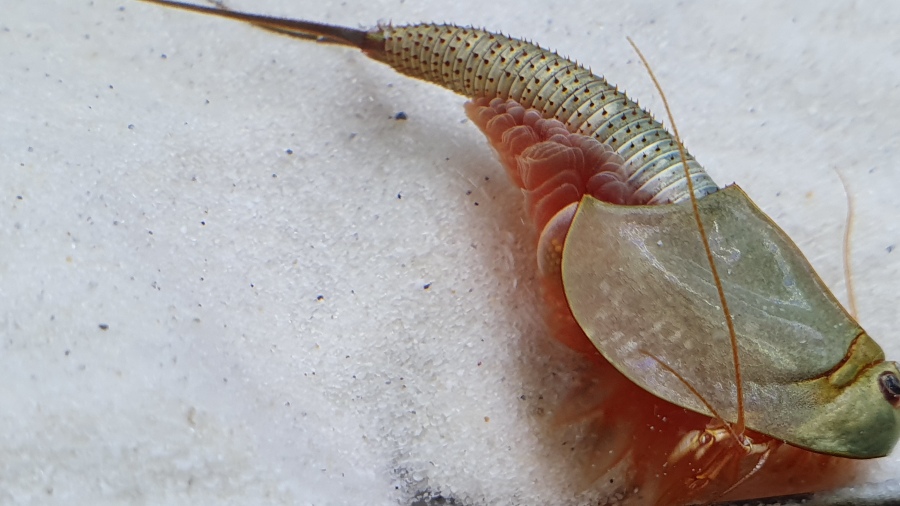Guide
Triops diseases: These are the signs to look out for
Unfortunately, as a Triops breeder you often experience that Triops do not hatch or die an early death after only a few days. There are various reasons for this, which you as a breeder can definitely influence positively. However, it also happens – as with all other animals – that a Triops becomes ill. Since prehistoric crayfish are very sensitive animals, even a bruise caused by a blow with an object can lead to death. It must be mentioned here that not much is known about Triops diseases as things stand. The Triops diseases described here have been thoroughly researched, but are not fully scientifically confirmed and come from commonly available sources. I am not a veterinarian and cannot accept any liability from a medical point of view for what is described here. Below we look at the most common health complaints in Triops.

Triops diseases: Moulting problems
The moulting process can sometimes cause problems, and especially weakly aged animals often do not survive the moult. As a breeder, you should by no means help with the moult and try to free the Triops from the skin. This can lead to fatal bruising. A common problem with moulting is too much animal food. Cholesterol is used in the body to produce the hormone ecdysone, which is responsible for moulting. Animal food contains cholesterol and if too much of it is consumed in the diet, it causes increased production of the moulting hormone and too rapid a moult. To minimise Triops diseases such as moulting problems, attention should be paid to water values in addition to diet.
→ More information can be found in the main article: Triops anatomy
Triops diseases: Gill parasites
A parasite infestation of the gill lobes is caused by small worms in gill breathers. With the help of a magnifying glass, tiny white lines can be seen on the body; these are the result of the swelling of the feet and the bright red colouration. As a preventive measure, the substrate should be thoroughly washed and the tank cleaned to avoid infestation of other aquarium inhabitants. For some parasites, the use of sea almond leaves helps. The tannins they contain cause the worms to die and have a healing effect on the Triops.
Constipation
Triops have a very fast metabolism. The ingested food is excreted again within minutes. This would be like a human being having to go to the toilet after every meal. Accordingly, the primeval crabs often suffer from constipation, which is often the result of a failed moult.
Fungal infestation
One of the common Triops diseases is fungal infection. This can be recognised by the tiny spots on the body. These contagious fungi become progressively larger and spread all over the body. The Triops affected by fungus should be isolated immediately and a large water change should be made in the tank. Fungicides for shrimps and crabs are suitable as a countermeasure.
Deformations
Occasionally, due to high concentrations of heavy metals and protein deficiency, life-threatening deformation of the Triops carapace occurs. Protein-containing food helps prevent this.
→ More information can be found in the main article: Triops anatomy
Bruises, haemorrhages and contusions
It is easy for Triops to bump into something and get a bruise. A blood blister forms on the body, which can be seen as a red spot. Triops also injure themselves on sharp edges such as stones and bleed to death. Because they do not have a blood clotting agent and blood clotting in the water is made even more difficult, the animals unfortunately die within a very short time. In most cases, keepers do not have the time to react. In addition, the blood attracts other aquarium inhabitants. Bruises also usually mean the end for the Triops.
- Triops – Survivors of prehistoric times, heroes of the universe - 17. April 2025
- Aquaristics in Italy – Underwater passion between the Dolce Vita and the Mediterranean - 12. April 2025
- Palaeontology: Giant penguins discovered in Peru - 2. April 2025